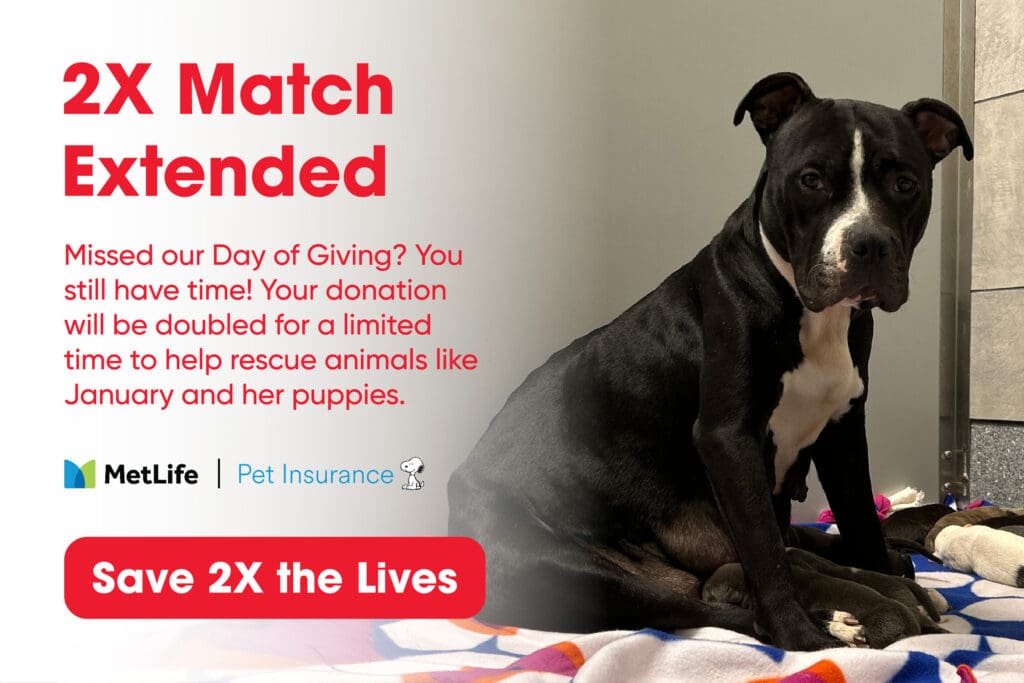First aid is critical care for humans that you can and should extend to your furry friend. Sure, it can be intimidating (your pet can’t exactly tell you what’s wrong!) but with a little know-how and necessary supplies on hand, administering first aid to your best friend may be easier than you think.
We sat down with Dr. Gloria Dorsey, DVM and VP of Medical Services here at AHS for a crash course in pet first aid that could save your four-legged friends life!
Question: When assembling a first aid kit for pets, what essentials should we have on hand?
Dr. Dorsey: The kit should include a thermometer, lubricant, muzzle, disposable gloves, bandage material, scissors, alcohol wipes, cotton gauze, chlorhexidine solution (multipurpose antiseptic), and hydrogen peroxide. As a rule of thumb — avoid giving pets over-the-counter medications. Give over-the-counter medications only if you are acting on the advice of your pet’s veterinarian.
Q: What do you do when your dog eats an “off limits” food item (e.g. – onions, peanuts, grapes and chocolate)?
Dr. Dorsey: With ingestion of any toxic substance, the amount consumed is most important. Vomiting may be induced with small amounts of 3% hydrogen peroxide if the pet is conscious. Observe closely after administering the hydrogen peroxide. Vomiting should occur within 10 minutes of ingestion. Do not give hydrogen peroxide if the pet is already vomiting or otherwise incapacitated. Inducing vomiting does not ensure that the stomach contents have been emptied and significant quantities of the ingested material may remain or already be absorbed. Seek medical attention immediately.
Q: I think my pet is having a heat stroke. What do I do?
Dr. Dorsey: A true emergency, the indications of heatstroke are elevated body temperature, rapid breathing, loss of coordination, collapsing, or unconsciousness. Remove the pet from the heat and pour cool water on head, body and feet. Seek veterinary care immediately as intravenous fluids and medications for shock are required to help revive the pet. Additionally, don’t leave pets in cars during the summer months and don’t jog with them during the hottest times of the day, usually between 11 am and 6 pm.
Q: My dog was stung by a bee and appears to be having an allergic reaction. What do I do? Can dogs take Benadryl?
Dr. Dorsey: The sites of bee stings can be difficult to identify. Focus on the areas where swelling is apparent. Shaving is ideal for affected areas to look for the stinger. Unable to shave the area? Apply a cold pack to the swollen area to reduce swelling and itching. If a stinger is identified, use a flat rigid object to scrape it out. Do not use tweezers to remove the stinger to avoid releasing more venom into the wound. Oral Benadryl can be used to reduce the itchiness but it is only about 60% effective. For more immediate relief and in the cases of difficulty breathing, seek veterinary care immediately.
Q: My pet was bitten by another animal and is bleeding. What do I do?
Dr. Dorsey: Use a topical antiseptic wash (not hydrogen peroxide) to rid the area of debris and surface bacteria, then cover or bandage the affected area and seek veterinary care to ensure proper healing of the area.
Q: My pet stopped breathing. Do I administer CPR like I would to a human?
Dr. Dorsey: The point of CPR is to get oxygen and blood to the animal’s tissues. Mouth-to-nose resuscitation is the first step. Chest compressions help promote circulation when there is no pulse. The animal can be placed on its back or side will chest compressions are performed over the area of the heart.
Q: My pet is having a seizure/convulsions. What do I do?
Dr. Dorsey: Cover the pet with a blanket or large towel to help calm it and keep it still. Stay close to prevent injury to your pet from objects falling onto the pet because of thrashing and erratic movement. Two or more seizure or convulsive events in an 8 hour period require an assessment by your pet’s veterinarian.
Q: My dog is choking. Do I administer the Heimlich maneuver?
Dr. Dorsey: A choking pet won’t be still enough or calm enough to enable a maneuver such as the Heimlich. You can attempt to dislodge an object by thumping the pet between the shoulders. Do not put your hands in your pet’s mouth. You could be bitten or push the object further into the airways.
Q: When is it time to call a veterinarian?
Dr. Dorsey: The first step is to call the nearest 24 hour care facility to describe the nature of the injury or concern. The attendant will be able to advise you whether veterinary care should be sought. Seek help immediately if the pet is weak, collapsed, bleeding or having difficulty breathing.
Q: My dog is sick and injured and I need to rush him to the veterinarians. Are there any precautions I should take before transporting him?
Dr. Dorsey: Try to keep the pet’s head and neck motions to a minimum so thrashing and jerking movements won’t cause further injury. Small dogs may be placed in a box with holes in it. A temporary muzzle may be made using a strip of cloth that is not bound too tightly around the muzzle to reduce the likelihood of being bitten.
Send your vet questions to media@atlantahumane.org, and you may soon see your question right here on our blog!

